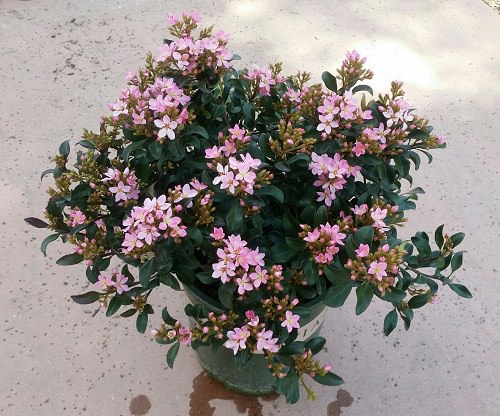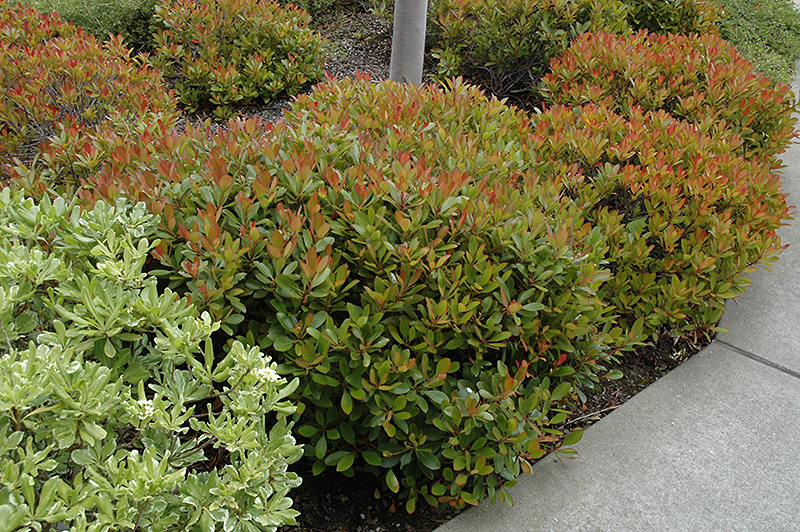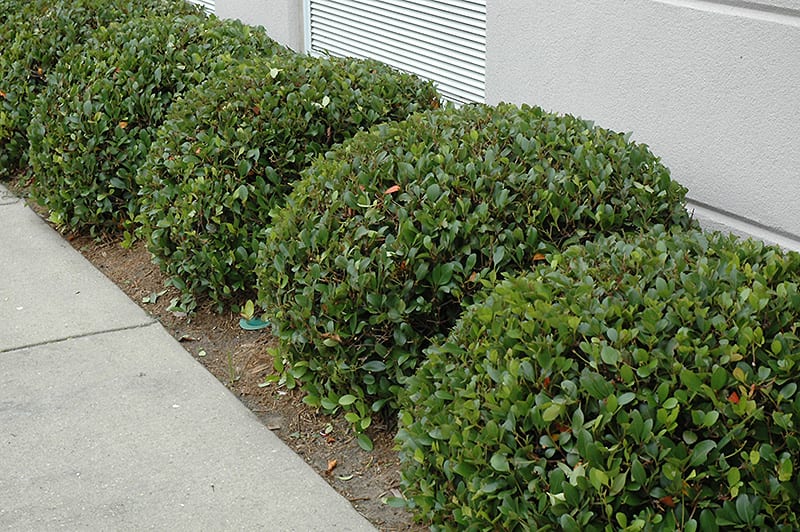

Spring Sonata*: 4′ T x 4-5’W – White flowers bloom 2-3 weeks later than other varieties, so plant with other Indian hawthorns for an extended blooming season in your beds. White blooms on glossy, deep green and wavy leaves. Southern Moon*: 2-3′ T x 3-4′ W – Newer selection with superior disease resistance and compact mounding habit. Leaves turn burgundy-red with onset of cooler temperatures. Snowcap*: 4’T x 4’W – Compact and mounded with pink flowers that fade to white. Snow White*: 4’T x 4’W – Compact spreading habit and white flowers. Pinkie: 3′ T x 3′ W – A very compact pink bloomer. Pink Lady: 4-6′ T x 4-6′ W – Rich pink blooms on leathery green foliage. Minor*: 4-5′ T x 4-5′ W – Superior disease resistance, an upright form, handsome dark green leaves, white blooms. Majestic Beauty*: 8-10′ T x 6-8′ W – Good disease resistance, pearl-pink blooms, one of the larger Indian hawthorn. Georgia Petite*: 2-3′ T x 3-4′ W – Superior disease resistance, a very compact white.

The most common Indian hawthorn.ĭwarf Pink: 3-4′ T x 3-4′ W – Pink flowers on green foliage that turns bronze in winter.Įleanor Taber*: 3-4′ T x 3-4′ W – Leaves like ‘Pink Lady’, similar growth pattern with superior disease resistance. Rose-pink blooms.Ĭlara: 3-4′ T x 3-4′ W – Fragrant white blooms and new foliage appears red, maturing to green. Select the best Indian hawthorn for your needs!Ĭalisto*: 2-3′ T x 3′ W – Good disease resistance, lower growing, mounding selection with significantly curled leaves and extra-dark (burgundy highlights) fall foliage color. * Indicates the types with the best disease resistance. The following is cultivar information listing heights, sizes, and colors of the Indian hawthorn we carry. They’re not just a little bit more resistant – it’s a night and day difference and we strongly recommend you select them. Avoid this ever being a problem by making sure your plants get excellent sun, good airflow, good nutrition, and by selecting varieties listed below marked with an asterisk (*) indicating that this type has outstanding disease resistance. Secondly, Indian hawthorn when poorly maintained can catch a fungal leaf disease called entomosporium leaf spot. Indian Hawthorns produce beautiful white or pink blooms in the spring. This allows your plants to have their best show of color. Indian Hawthorn is perfect for smaller gardens and areas around house foundations. Indian hawthorn have two notable maintenance quirks that must be observed for the best looking plantings!įirst, Indian hawthorn bloom off their older wood, so any major pruning or shaping of these plants should be saved until AFTER the shrubs bloom in the springtime. Then just transplant your shrubs with the same compost, expanded shale, and greensand blend (our Covington’s Soil Builder) that you’d work into the soil when planting any common tree or shrub. This discourages fungal leaf diseases from ever taking hold. Make sure that your sprinkler heads will not spray the leaves of your plants directly, just like a bed of roses or miniature crape myrtles.

INDIAN HAWTHORN FULL
Select an area with full sun (at least 7 hours) and good airflow.
INDIAN HAWTHORN INSTALL
Indian hawthorn are not difficult to install properly. Some Indian hawthorn have colorful darkened winter foliage and attractive berries, as well! We recommend, when selecting an Indian hawthorn, that you first look for types which will reach the height, width and color you’re looking for, then choose the most disease resistant variety listed. Indian hawthorn grow in a wide selection of heights, widths, and leaf textures – and bloom in white or a range of pink colors. There are many types of Indian hawthorn, and this handout will help you select, install, and maintain the best looking Indian hawthorn in your landscape! Prune in autumn to help maximise spring flowering.Indian hawthorn add huge splashes of color in the spring to North Texas landscapes! Beautiful, colorful shows of pinks and whites dominate sunny areas on easily maintained evergreen shrubs.
INDIAN HAWTHORN HOW TO
How to grow indian hawthorn in your garden


 0 kommentar(er)
0 kommentar(er)
